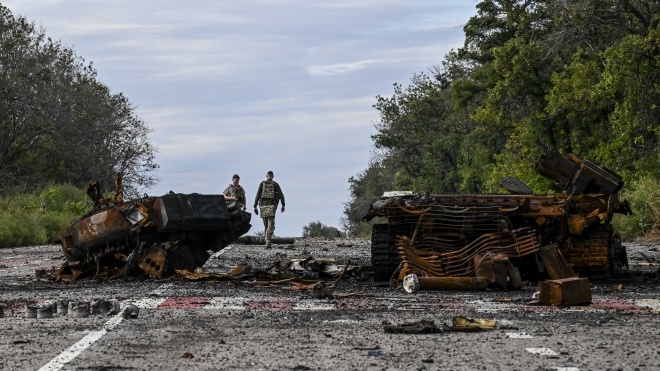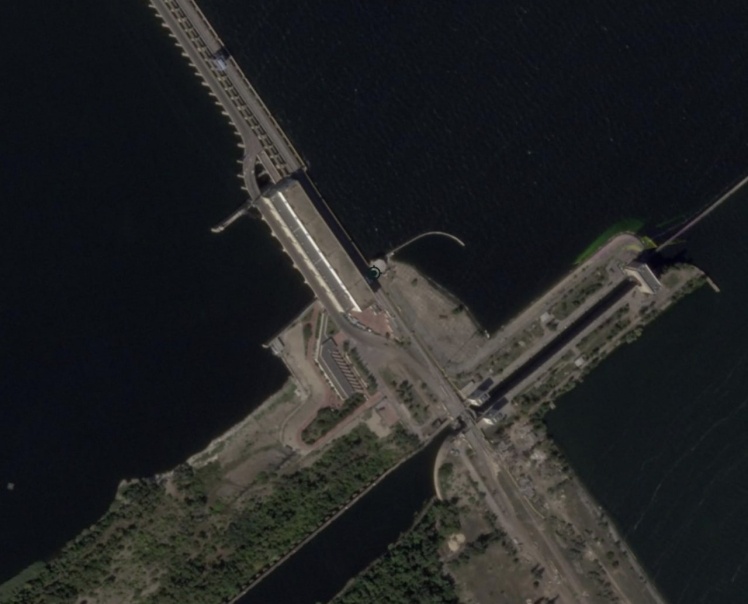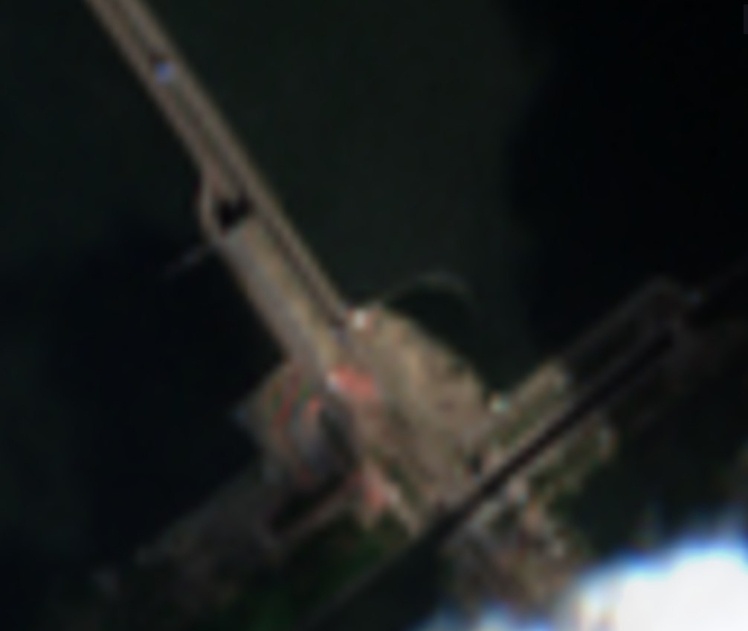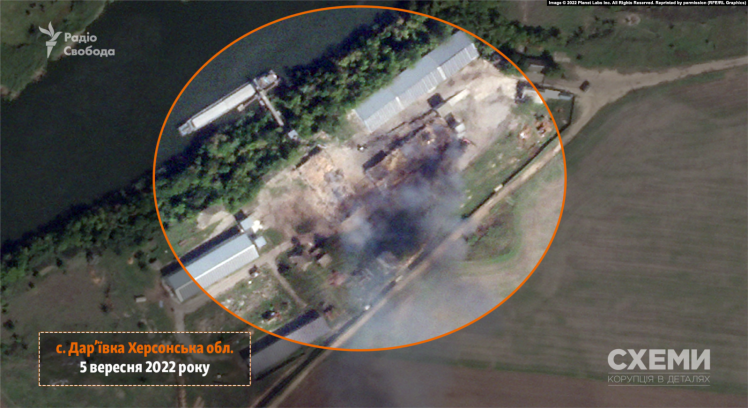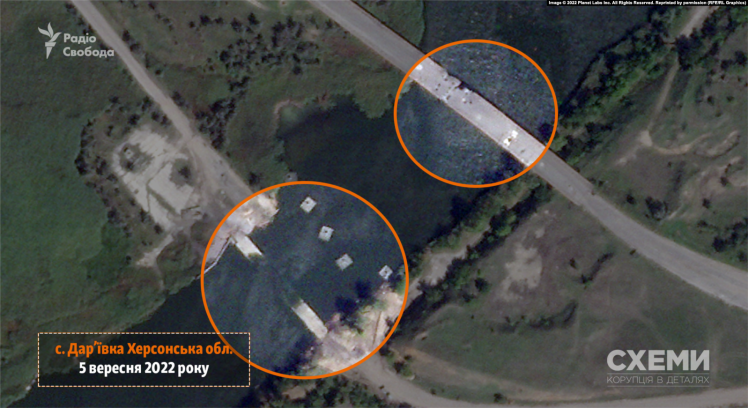In Ukraine, the issue of military registration of women has been postponed for at least a year. This problem has been going on since 2021, but during the martial law it became more acute: conscripts are forbidden to travel abroad. And a woman who has registered for the military also becomes conscripted. From October 1, women whose professions were included in the list of the Ministry of Defense had to go to the military commissariats and register. The General Staff of the Armed Forces of Ukraine assured in July that the army has no special needs for them, and the process itself should be voluntary, but this requires changes to the law. Lawmakers donʼt have time to introduce them, so the Ministry of Defense decided that the order will enter into force in a year. During this time, MPs should change the law and make military registration for women voluntary. The only exception is doctors, for whom registration will remain mandatory.
In September, Ukraine traditionally begins preparing the state budget for the next year. However, this year is the first time that this is happening in the conditions of a full-scale war. President Volodymyr Zelensky has already announced that more than one trillion hryvnias will be spent on the army. For understanding: all state budget expenditures in 2022 were supposed to amount to 1.4 trillion hryvnias. That is, the authorities plan to spend almost the entire Ukrainian budget next year exclusively on the army.
The Ukrinform website published a "programmatic" article about the prospects for war in 2023. It was written by the Commander-in-Chief of the Ukrainian Armed Forces General Valeriy Zaluzhny and the Deputy Chairman of the Defense Committee of the Verkhovna Rada, General Mykhailo Zabrodsky. They describe in detail the threats facing Ukraine, the capabilities of the Ukrainian army and the prospects for the end of the war.
Zaluzhny and Zabrodsky mention the "center of gravity of war" — something sacred for the enemy, which plays the most important role in the conduct of hostilities and the desire to continue them. They say that many analysts mistakenly consider Crimea to be such a center, because it is the main logistical hub for the entire front from Kherson to Donetsk, as well as Putinʼs personal political gain. However, in their opinion, the real "center of gravity of the war" is the fact that the citizens of the Russian Federation donʼt feel the war. The battles are not fought on their territory, they are not shelled and therefore continue to support the war, because they are not personally affected by it. The Russians can shoot at any point in Ukraine, because they have missiles with a range of several thousand kilometers. And the Ukrainian army shoots at a distance of about 100 kilometers. Therefore, Zaluzhny and Zabrodsky are calling on the West to provide Ukraine with more long-range weapons in order to create parity and force Russia to end the war.
In this article, for the first time, they stated that the Ukrainian military was behind the explosions at the Saky airfield. Zaluzhny and Zabrodsky write that it happened after a "combined missile strike". In the last 10 days, no noteworthy events took place in Crimea, and the operation of Russian air defense systems was not publicly reported.
As a result of the large-scale counteroffensive of the Ukrainian army in Kharkiv and Kherson regions, the situation with the so-called referendums has become even more difficult for Russia. It is already obvious that there will be no pseudo-voting in September. No one announces them or names the exact dates. For now, the Russians have actually put this issue on hold. However, for the first time in Russia, they were able to announce at least some date for the "referendums" at a high level — Andrey Turchak, Secretary of the General Council of Putinʼs United Russia party, said that, in his opinion, the pseudo-voting should be held on November 4, on the Day of Peopleʼs Unity in the Russian Federation. On September 9, the Russian exile publication Meduza wrote that the Kremlin had set this deadline for all occupied territories of Ukraine. Because of this, tension is already arising: politicians, in particular, the Kremlin curator of the occupied territories of Ukraine, Sergey Kiriyenko, want to hold "referendums". And the military is in favor of forcibly annexing these territories to the Russian Federation without any pseudo-votes. But already on September 11, the same Meduza wrote that the Kremlin had completely suspended preparations for "referendums", and Russian political technologists in the Zaporizhzhia and Kharkiv regions were ordered to come back to Russia. One of the publicationʼs sources noted that it was planned to officially name the dates of the pseudo-voting next week, but now it is not even about November.
Kharkiv region
In the Kharkiv direction, Russian troops continue to try to improve their positions. They resorted to offensives along the front line — in the last 10 days they tried to move towards the villages of Prudyanka and Ruski Tyshky north of Kharkiv, but to no avail. The situation in the village of Udy is still not fully understood. The General Staff of the Armed Forces of Ukraine reported both its shelling and unsuccessful attempts by the Russians to attack, but there are no new videos or photos from this village either from the Ukrainian or Russian military. Now, judging by everything, the Russian army is completely leaving the occupied territory north of Kharkiv.
The most interesting situation began in the area of the city of Balaklia. On September 6, the Ukrainian military launched a counteroffensive, broke through the Russian defenses and wedged into the occupied territory for tens of kilometers.
Counteroffensive of the Ukrainian Armed Forces in Kharkiv region
-
The Ukrainian military liberated the village of Verbivka west of Balaklia and moved north.
-
Defense forces of Ukraine reached the village of Volokhiv Yar. To the south of Balaklia, the villages of Bayrak and Nova Husarivka were liberated. The first information about the liberation of Balaklia appeared.
-
The Ukrainian military reached the village of Shevchenkove. The town of Balaklia was officially liberated.
-
The Ukrainian military liberated the villages of Chkalovske and Shevchenkove. The first photos of the Defense Forces of Ukraine appeared on the outskirts of Kupyansk, as well as on the banks of the Oskil River.
-
The Ukrainian military entered Kupyansk and raised the Ukrainian flag there. The city is divided by the Oskil River, and its left-bank part remains occupied. The Defense Forces of Ukraine also reached the northern outskirts of Izyum. In addition, the Ukrainian military moved to the north of the Kharkiv region in the direction of Vovchansk.
-
The Ukrainian military entered the village of Kozacha Lopan, north of Kharkiv, as well as the village of Hoptivka. In addition, the Russians left the cities of Izyum and Vovchansk, as well as the villages of Velykyi Burluk and Dvorichna.
The Ukrainian army actually conducted a successful counter-offensive operation using blitzkrieg tactics, when, after breaking through the enemyʼs defenses, the offensive units try to advance with great speed as deep as possible into the enemyʼs rear and create chaos there. The advanced groups of the Ukrainian troops quickly developed the offensive, reached populated areas, destroyed the few firing points of the Russians and moved on, preventing the occupiers from building a new line of defense, stopping the offensive and get the reserves. Ideally, the Russians should have retreated to pre-prepared positions, but it seems there simply were none. This allowed the Defense Forces of Ukraine to very quickly reach the Oskil River and cut the connection between the cities of Izyum and Kupyansk. Attempts by the Russians to get reserves and stop the advance of Ukrainian troops were unsuccessful — they were not given the opportunity to deploy, dig in, or establish even some kind of interaction among themselves.
Since September 6, the territory in the triangle between the cities of Izyum, Kupyansk and the village of Chkalovske has been shrouded in the fog of war, in which no one understood how far the Ukrainian army was able to advance and where exactly it is. As of September 10, it has already become clear that Russian troops are withdrawing from these territories. This was confirmed by the Russian Ministry of Defense, which called the breakthrough of its defenses and the complete collapse of the front from Kharkiv to Sloviansk an "operation to roll back and transfer troops" to the territory of Donetsk region. And already on September 11, on its maps, it generally showed withdrawal from almost the entire territory of the Kharkiv region. Allegedly, only the left bank of the Oskil River, where part of Kupyansk and the town of Borova are located, remains under the control of the occupiers. The Ukrainian military has not yet reached all the settlements left by the Russians and every day they publish more and more photos with the Ukrainian flag in the liberated villages and cities of Kharkiv region.
Perhaps the main result of this entire counteroffensive was the liberation of the city of Kupyansk, at least its right-bank part. This city was a very important logistical hub for the occupiers: the railway from the Russian cities of Belgorod and Valuyka passes through it. Part of this path is now controlled by the Ukrainian military, and the rest is under fire control. Using the railway from Kupyansk, the Russians made deliveries to the Izyum group of their military, to the area of the cities of Lyman and Sviatohirsk of the Donetsk region, and even to the Luhansk region — through the town of Svatove to the cities of Kreminna, Rubizhne, and Severodonetsk. Now it will be much more difficult for the Russian units that are still in these settlements to receive reinforcements.
The liberation of Kharkiv region, in particular the city of Izyum, will significantly increase the supply of Ukrainian troops to Donbas. All because the Russian army planned to encircle the Defense Forces of Ukraine in Donbas in the spring, moving from Izyum to the south and from the Zaporizhzhia region to the north. Now the Ukrainian army will have additional roads for uninterrupted logistics. For the cities of Slovyansk and Kramatorsk, the threat of shelling or hypothetical capture has decreased several times, which has made them almost rear-line cities. In addition, Ukraine can even try to provide these cities with heat and gas during the heating season, if it has time to quickly repair the pipes that run through Izyum.
In a few days, the Ukrainian army in the Kharkiv region achieved almost the greatest military successes since February 24. Similar raids were last carried out only by the Russian army and as late as February and early March. The Defense Forces of Ukraine have already liberated more than two thousand square kilometers and continue to move forward. The total number of freed territories can reach more than 8 thousand square kilometers. The Russians were able to occupy only about 2-3 thousand square kilometers during the whole summer. In fact, the occupiers lost 10% of the territories of Ukraine they control.
«Babel'»
Donbas
As of September 11, the situation between the cities of Izyum and Slovyansk is not fully known, although the Russians allegedly had to leave these territories, the vast majority of which are covered by forests. Despite the statement of the Russian Ministry of Defense, it is also unknown where exactly the occupiers have gone and where they will build a new line of defense. Due to problems with logistics and the threat of the encirclement, the army of the Russian Federation could as well withdraw from the town of Sviatohirsk.
Fighting intensified on the left bank of the Siverskyi Donets River. At least the Ukrainian authorities have already officially confirmed that the Ukrainian military either fully controls or at least conducts sorties on that coast. The General Staff announced the liberation of the village of Ozerne south of the city of Yampil, and a video of Ukrainian military personnel in the village of Stariy Karavan appeared. Pro-Russian Telegram channels write about the fighting on the outskirts of the city of Lyman, but Ukraine has not yet officially confirmed this. The capture of Lyman and Yampil will open the opportunity for the Ukrainian military to advance both towards the town of Borova in Kharkiv region and the city of Kreminna in Luhansk region.
In the direction of the town of Siversk, the Russian troops did not achieve any success, although they tried to advance in the direction of the villages of Hryhorivka, Serebryanka and Verkhnyokamyanske, which are east of the city. Volodymyr Zelensky said on September 4 that the Ukrainian army in the Siversk-Lysychansk direction was able to counterattack and occupy advantageous heights. Presumably, these are the heights between the villages of Verkhnokamyanske and either Bilohorivka or Spirne.
The Russians are trying to surround Bakhmut, but they have almost no success. Street fighting near the KNAUF plant continues in Soledar, but the Russian army cannot enter the city further. The occupiers do not enter Bakhmut itself either — they stay on the outskirts. They make their main efforts south of the city.
Most likely, Russian troops did capture the village of Kodema. In recent days, it has disappeared from the lists of the General Staff of the Armed Forces of Ukraine. Instead, they report that the occupiers are unsuccessfully trying to advance on the village of Mykolaivka Druga, which is already behind Kodema. This indirectly indicates the loss of the settlement. However, the Russians are not successful in the rest of the directions around Bakhmut: they cannot capture the village of Zaytseve.
Fierce fighting continues along the western outskirts of Donetsk between the cities of Avdiyivka and Maryinka. The occupiers began advancing in this direction in the first days of August. They, most likely, completely took Pisky village, although they still publish videos of strikes on Ukrainian positions there. But apart from this, the Russians did not achieve anything else. During the eight years of the war in Donbas, all the western outskirts of Donetsk have turned into powerful fortified areas with a huge number of defensive structures, and the Russians have to spend too much effort to advance here. Even in their Telegram channels, they flaunt the fact that they trivially took separate positions of the Ukrainian military. There is not even talk of capturing settlements yet.
There are no significant changes on the line between the town of Vugledar and the village of Velyka Novosilka. The Russians are trying to advance on Vugledar itself, but without success. Also, Russian Telegram channels announced the alleged capture of the villages of Vremivka and Novopillya west of Velika Novosilka, but there is no confirmation of this.
«Babel'»
«Babel'»
Zaporizhzhia and Kherson regions
The front line in the Zaporizhzhia region remains unchanged. This section is still the most "calm", neither side is trying to advance. The Ukrainian Armed Forces continue to hit Russian positions, bases and warehouses in the occupied cities, in particular in Tokmak and Melitopol. The Russians responded by massively shelling civilian infrastructure. Because of this, the local authorities began to evacuate women, children and the elderly from the city of Orikhiv.
After the visit of the IAEA mission, the situation at the Zaporizhzhia NPP is somewhat stabilized. The shelling did not stop completely, but their intensity decreased. Perhaps this was influenced by the fact that the IAEA left two of its observers at the station and in Energodar. They will work there permanently.
Seven principles of safety of nuclear facilities
Physical integrity of objects.
Stable operation of all security systems.
Safety and unhindered work of personnel.
Reliable and uninterrupted power supply of the station.
Uninterrupted logistics routes for transporting the necessary equipment or tools.
Availability of working and effective radiation monitoring systems.
Reliable communication with the regulator or station owner.
The IAEA itself published a report on its visit to the station. The members of the mission stated that all seven safety principles of nuclear facilities were violated at the Zaporizhzhia NPP. In addition, Russian military and Rosatom equipment and workers were spotted on the territory. The IAEA report emphasizes that Ukrainian personnel continue to fully perform their work and ensure the stable operation of the plant, however, people are under constant stress and pressure, and the Russians donʼt allow them to enter all buildings of the ZNPP, which poses a security threat. The IAEA called for a complete cessation of shelling around the nuclear power plant and to agree on the creation of a protected zone near the plant.
The Ukrainian military has success in the Kherson region as well. There, too, the counteroffensive continues, but not as fast as in Kharkiv region. The reason is the different tactics and preparedness of the Russian troops. They managed to transfer reinforcements there and create several lines of defense.
However, on September 4, the Defense Forces of Ukraine officially confirmed the liberation of the Vysokopillya settlement in the north of the Kherson region. At that time, President Zelensky reported about two liberated settlements. Most likely, it is also about the village of Olhyne to the west of Visokopillya. The Ukrainian military continues to press in this direction and is fighting for the village of Arkhangelske.
The bridgehead of the Ukrainian troops on the left bank of the Ingulets River in the area of the villages of Andriivka and Lozove is expanding. The defense forces liberated the villages of Blagodativka and Bilogirka and are advancing deep into the Kherson region. In recent days, the General Staff of the Armed Forces of Ukraine constantly reports that the Russians are shelling the village of Sukhyi Stavok and are trying to advance on the village of Bezimenne. The Russian Ministry of Defense also talks about the alleged "destruction of Ukrainian equipment" in Bezimenne. Apparently, the Defense Forces of Ukraine are moving further into the Russian defense towards the Dnipro River. If the advance is successful, it will cut the Russian troops on the right bank of the Dnieper in half. And the group in the north of the Kherson region will not be able to cross the Dnipro, because the bridges are located downstream.
Ukrainian troops continue to conduct regular and targeted strikes at the Dnipro and Ingulets crossings. Satellite images confirm that the bridge over the Kakhovka HPP has most likely completely collapsed. Clearer images on September 2 showed that part of the bridge had fallen, but on September 6, it was not visible at all.
The Defense Forces of Ukraine also destroyed the bridge across Ingulets River near Daryivka village. There, the Russians built a pontoon crossing, now itʼs destroyed, and at the Russian base near it, traces of a large-scale fire can be seen.
«Babel'»
«Babel'»
Weapons supply
On September 8, the fifth meeting of Ukraineʼs allies in the Rammstein format took place. There were no breakthrough announcements regarding weapons for Ukraine either during the meeting or after it. The Pentagon only noted that they discussed long-term military aid for the Ukrainian army.
However, there were still some announcements. The US announced a new $675 million aid package. It included, in particular, additional ammunition for HIMARS; four 105 mm howitzers; additional HARM anti-radar missiles; a thousand 155 mm rounds of Remote Anti-Tank Mines (RAAM) and much more.
The Bloomberg publication also reported that the United States handed Ukraine high-precision Excalibur artillery shells. They can shoot at a distance of 40 km and are guided by GPS. This makes them as accurate as possible and allows to hit targets with clearly defined coordinates.
Ukraine will receive 160 Hellfire missiles from Norway. This is an American air-to-ground guided missile. It is used against objects with strong protection: helicopters, combat aircraft, drones, ground vehicles. Usually, such missiles are launched from aviation, but the Norwegians will hand over special launchers to Ukraine.
Translated from Ukrainian by Anton Semyzhenko.
We monitor the situation at the front every day. You can support Babel anytime and now too: Patreon 🔸 [email protected]🔸donate in cryptocurrency🔸in hryvnia.
Ukrainian flags on the monument to Taras Shevchenko, located in the central square of the city of Balaklia, Kharkiv region, on September 10, 2022.
Getty Images / «Babel'»
